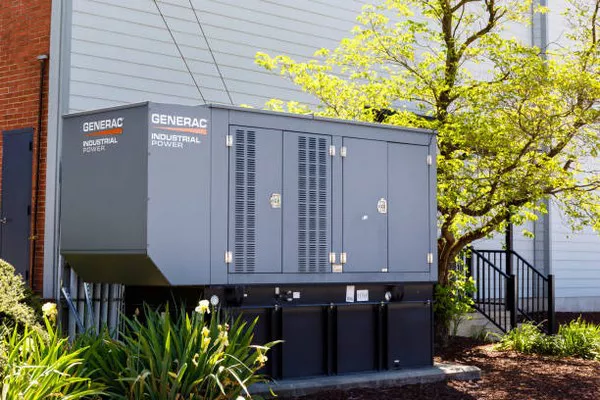Generators are essential assets for both residential and commercial properties, providing backup power during unexpected outages. However, selecting the right location for your generator is a critical decision that can impact its efficiency, safety, and overall performance. In this article, we will explore key considerations to help you determine where to place your generator to ensure optimal functionality and longevity.
Local Building Codes and Regulations
Before you decide on a location for your generator, it’s crucial to consult local building codes and regulations. These codes vary by region and may impose specific requirements regarding generator placement, noise levels, emissions, and safety measures. Familiarizing yourself with these regulations is the first step in choosing a suitable location.
Safety First
Safety should be your top priority when determining where to place a generator. Generators produce potentially harmful emissions, including carbon monoxide (CO) and heat. To ensure the safety of occupants and prevent any health hazards, consider the following safety guidelines:
a. Outdoor Placement: Generators should be installed outdoors, away from living spaces, in a well-ventilated area. This prevents the buildup of CO and exhaust fumes inside buildings.
b. Minimum Distances: Maintain a minimum distance from windows, doors, and air intake vents to prevent exhaust gases from entering the building. Follow the manufacturer’s recommendations for specific clearance distances.
c. Elevated Platform: Placing the generator on an elevated platform can help protect it from flooding or moisture damage.
d. Fire Safety: Ensure the generator is located at a safe distance from flammable materials, such as propane tanks, and follow local fire safety regulations.
Noise Considerations
Generators can be noisy, which can be disruptive to both you and your neighbors. When selecting a location, consider noise reduction measures such as soundproofing enclosures or choosing a spot that naturally minimizes sound transmission. Pay attention to the generator’s decibel rating and compare it to local noise ordinances.
Accessibility
Accessibility is a crucial factor in generator placement. You need to ensure that your generator is easily accessible for maintenance, repairs, and refueling. Keep in mind the following accessibility considerations:
a. Adequate Space: Leave enough space around the generator for maintenance personnel to work safely. The manufacturer’s guidelines typically specify the required clearance.
b. Accessibility in Inclement Weather: Ensure that the generator location is accessible in all weather conditions. This may require clearing snow or debris during the winter months.
c. Fuel Source: If your generator is powered by natural gas or propane, make sure the fuel source is easily accessible for refueling.
Ventilation
Proper ventilation is essential to dissipate heat and exhaust gases produced by the generator. When choosing a location, consider the following ventilation requirements:
a. Natural Ventilation: Ideally, place the generator in an area with natural ventilation to allow exhaust gases to disperse quickly.
b. Ventilation Systems: If natural ventilation is insufficient, consider installing an exhaust ventilation system that safely directs gases away from the generator.
c. Avoid Enclosed Spaces: Never place a generator in an enclosed space, such as a garage or shed, without proper ventilation.
Electrical Requirements
Generators require electrical connections to your home or business’s electrical system. The location you choose should allow for easy connection to your main electrical panel. It’s advisable to consult a licensed electrician to ensure the wiring and connections meet local electrical codes and standards.
Environmental Impact
Consider the environmental impact of your generator’s location. Avoid placing it near sensitive ecological areas, water bodies, or locations prone to flooding. Additionally, check whether local regulations require any environmental assessments or permits for generator installation.
Aesthetics and Landscaping
The appearance of your generator and its impact on your property’s aesthetics should not be overlooked. Some homeowners opt for landscaping or architectural solutions to hide or integrate the generator into their outdoor environment. Landscaping elements like shrubs or fencing can be used to create a visually pleasing barrier around the generator.
Remote Monitoring
Modern generators often come equipped with remote monitoring capabilities. Placing your generator in a convenient location that allows for remote monitoring and control can simplify maintenance and troubleshooting.
Long-Term Planning
Think about your long-term plans for the property. If you anticipate future expansions or renovations, consider how the generator’s location may affect those plans. It’s better to plan for flexibility and easy repositioning if necessary.
Conclusion
Selecting the right location for your generator is a decision that requires careful consideration of safety, accessibility, noise, ventilation, and compliance with local regulations. Prioritize safety and consult with professionals, such as electricians and generator installers, to ensure your generator is placed in the most suitable location for your specific needs. By making informed choices, you can ensure that your generator serves its intended purpose effectively and reliably for years to come.

